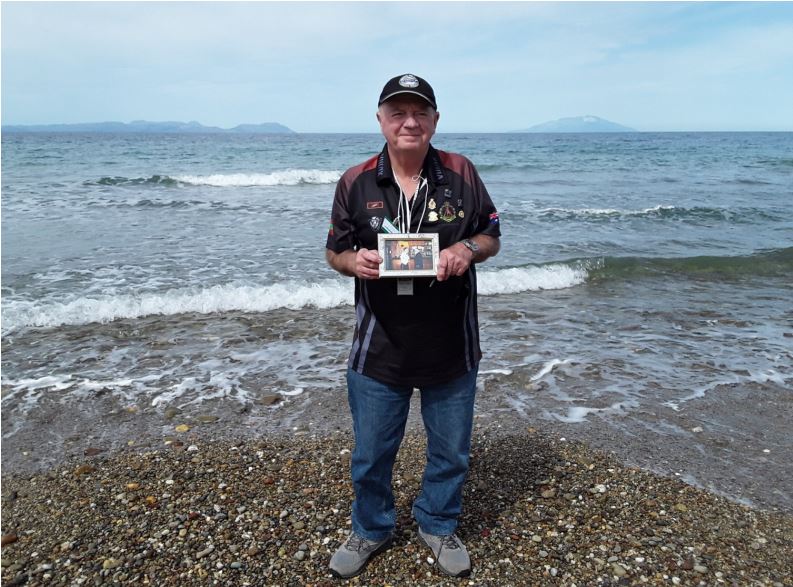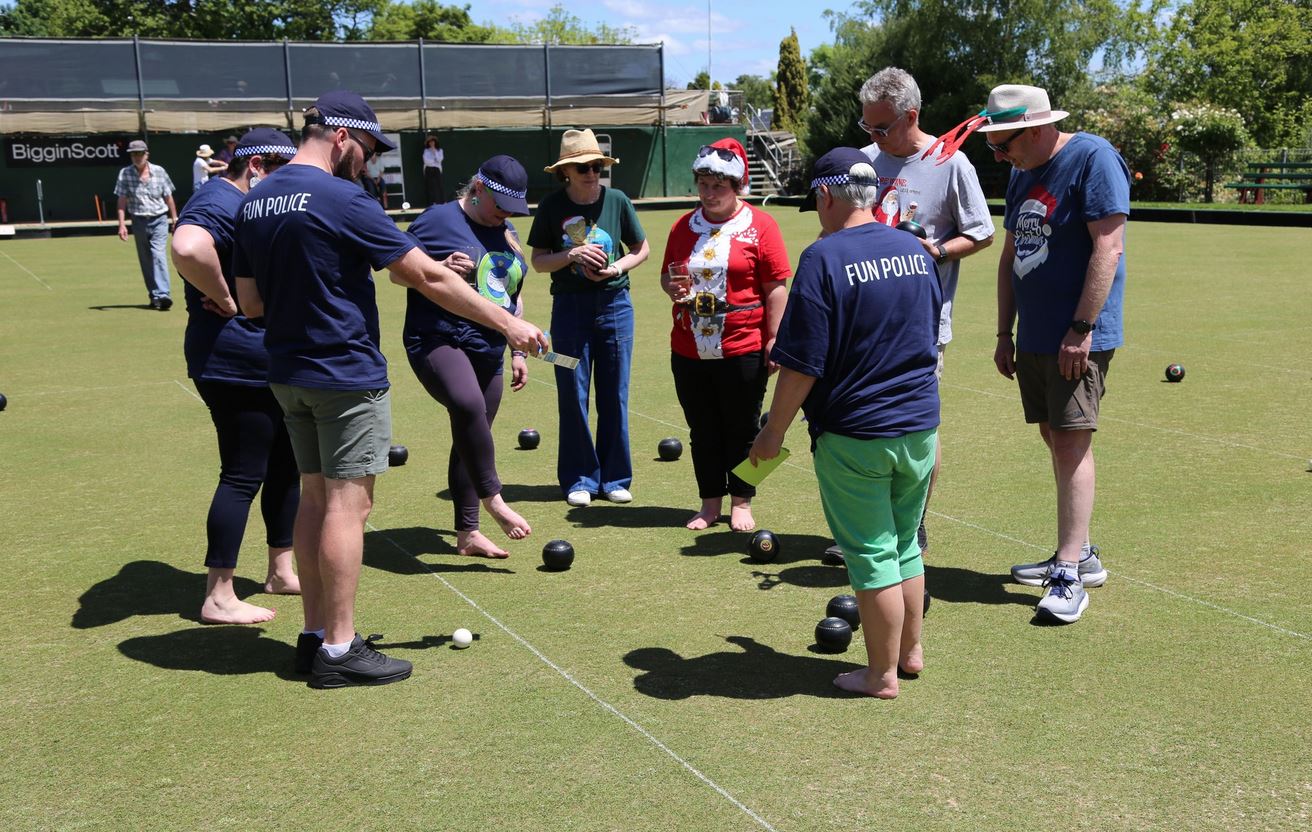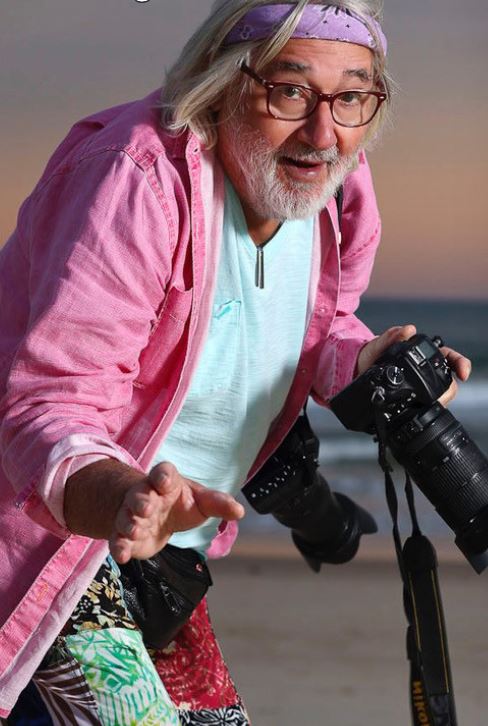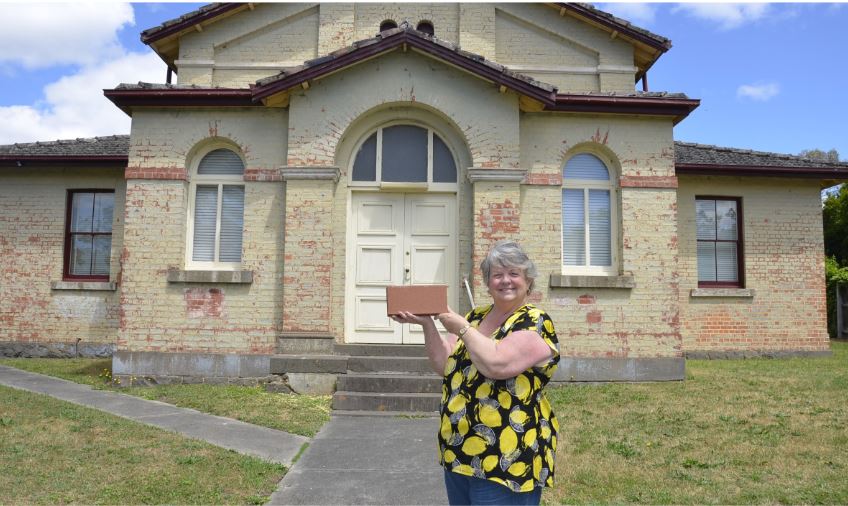June 24th, 2024How Alan ‘took’ his dad to Gallipoli

The desire to go to Gallipoli for the Dawn Service burnt strongly in Daylesford’s Alan Eaton. Major heart surgery and three operations firstly stopped him, but even when he did go it was with an undiagnosed broken leg.
His father always wanted to attend the service, but died without fulfilling his dream, so Alan ‘took’ him in the form of a treasured photo of the pair of them.
At each cemetery out came the photo. At the Anzac sector he sat on the beach. “I felt my father was standing next to me. Many people say if you don’t shed tears, you are not human.”
With him, too, were his grandfather’s medals from WWI.
To Alan’s surprise, a young girl on a pilgrimage with her father, found the grave of Corporal Alma May, son of James and Frances May of West Street, Daylesford.
Wounded by machinegun fire, Corporal May was taken to an aid station but died the next day, aged 24. His name is in the Avenue of Honour. Alan lay the medals on Corporal May’s plaque.
“The chances of finding a grave of someone from your hometown are slim,” says Alan, with some understatement.
He stood, too, at Lone Pine, where seven Victoria Crosses were awarded. To him, Gallipoli is where Australia was blooded as a nation.
His fascination with the Victoria Cross also took him to “Jacka’s Country” where Jacka the VC winner killed seven Turks in a trench by bullet and bayonet.
At Shrapnel Gully Alan saw where Simpson cheerfully earned a form of immortality as he brought down the wounded with his donkey, five of whom died before he was killed.
Alan’s family is steeped in military history, as shown by the books and pictures crowding his den. He was in the Army for 26 years until 1999.
His grandfather was seconded from the British Royal Navy in 1911 to help form the Australian Navy and fought in the first action in 1914, taking part in the capture of a radio station from the Germans in Papua New Guinea.
Alan’s father was in the artillery as part of the anti-aircraft force, guarding the steel works in Newcastle, and then in Darwin. Alan’s older brother Wallace went to Vietnam in 1970.
“I enlisted in ’74, just after Vietnam,” says Alan. He served in Malaysia, Canada and Hawaii.
Now 68, he was medically discharged from the Army, then spent 13 years as a contractor to the Defence Department. “I enjoyed it,” he says emphatically. “I would not change a step.”
Alan stoutly denies the stories that have sprung up that the Anzacs landed at the wrong place, saying there was 1.6 kilometres of land for them to come ashore.
Then there is the Turkish side. A professor from that nation told the Anzac pilgrims of their 86,000 soldiers killed, including those who charged with bayonets because they had no bullets.
“The world has learnt that a nation will fight to defend itself,” says Alan, instancing Vietnam, Korea and the Ukraine.
“The trip was all I wanted it to be.” Now he has his sights on another storied Anzac battlefield, Villers Bretonneux in France, where 2500 died saving the town.
Words: Kevin Childs | Image: Contributed










